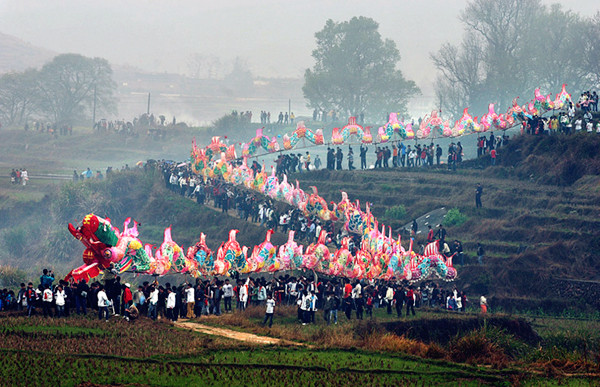Liancheng Gutian Dragon Dance
2013-06-03

The Liancheng Gutian Dragon Dance began in 1752, the 16th year of the reign of the Qing Emperor Qianlong. From Jan 14 to 16 of the lunar calendar, villagers will dance and play two to five dragons.
People will be amazed at the huge size of the dragon. It has more than 100 sections, each measuring a height of 2 meters and a length of 4 meters. Usually the dragon has a total length of up to several hundred or even thousands of meters.
The dragon head is more exquisite. The diameter of the dragon tongue is up to 1 meter long. The dragon is carried by a dozen people divided in shifts, creating the "largest dragon in the world".
As for production, bamboo splits are used to bundle up the skeleton. Gutian rice paper is used for mounting, upon which exquisite calligraphy and paintings are made.
For the parade, the tong, or god blunderbuss, a Chinese musical instrument, will be blown to lead the way, which will be accompanied by gongs and drums. Each household will light pine torches and candles and set off firecrackers to welcome the "dragon to travel on earth".
In the daytime, it resembles a dragon riding clouds and harnessing the mists. At night, with the lanterns appearing and vanishing in turn, it seems that the dragon is galloping into the sea.
Every Jan 16 of the lunar calendar, the dragon will be burned down. With the god blunderbuss taken to lead the way, the procession will continue once again. The dragon lanterns made by each household will rapidly be collected and sent to Heavenly King Temple for burning. The first one to burn his lantern will win a contest. Then, a banquet will be set to entertain guests and welcome the New Year




